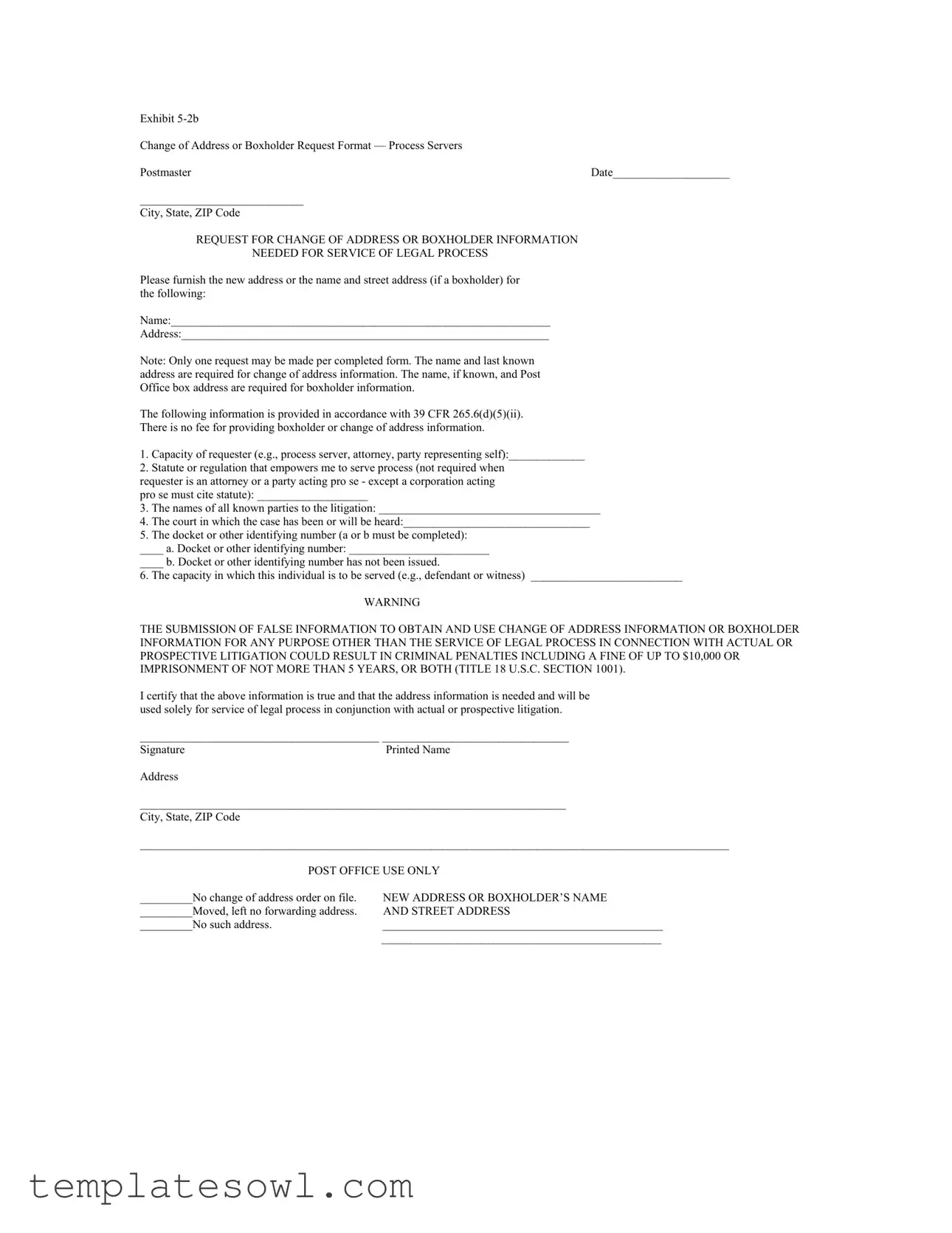Exhibit 5-2b |
|
Change of Address or Boxholder Request Format — Process Servers |
|
Postmaster |
Date____________________ |
____________________________ |
|
City, State, ZIP Code |
|
REQUEST FOR CHANGE OF ADDRESS OR BOXHOLDER INFORMATION
NEEDED FOR SERVICE OF LEGAL PROCESS
Please furnish the new address or the name and street address (if a boxholder) for the following:
Name:_________________________________________________________________
Address:_______________________________________________________________
Note: Only one request may be made per completed form. The name and last known address are required for change of address information. The name, if known, and Post Office box address are required for boxholder information.
The following information is provided in accordance with 39 CFR 265.6(d)(5)(ii).
There is no fee for providing boxholder or change of address information.
1.Capacity of requester (e.g., process server, attorney, party representing self):_____________
2.Statute or regulation that empowers me to serve process (not required when
requester is an attorney or a party acting pro se - except a corporation acting pro se must cite statute): ___________________
3.The names of all known parties to the litigation: ______________________________________
4.The court in which the case has been or will be heard:________________________________
5.The docket or other identifying number (a or b must be completed):
____ a. Docket or other identifying number: ________________________
____ b. Docket or other identifying number has not been issued.
6. The capacity in which this individual is to be served (e.g., defendant or witness) __________________________
WARNING
THE SUBMISSION OF FALSE INFORMATION TO OBTAIN AND USE CHANGE OF ADDRESS INFORMATION OR BOXHOLDER INFORMATION FOR ANY PURPOSE OTHER THAN THE SERVICE OF LEGAL PROCESS IN CONNECTION WITH ACTUAL OR PROSPECTIVE LITIGATION COULD RESULT IN CRIMINAL PENALTIES INCLUDING A FINE OF UP TO $10,000 OR IMPRISONMENT OF NOT MORE THAN 5 YEARS, OR BOTH (TITLE 18 U.S.C. SECTION 1001).
I certify that the above information is true and that the address information is needed and will be used solely for service of legal process in conjunction with actual or prospective litigation.
_________________________________________ ________________________________
Signature |
Printed Name |
Address |
|
_________________________________________________________________________
City, State, ZIP Code
_____________________________________________________________________________________________________
POST OFFICE USE ONLY
_________No change of address order on file. |
NEW ADDRESS OR BOXHOLDER’S NAME |
_________Moved, left no forwarding address. |
AND STREET ADDRESS |
_________No such address. |
________________________________________________ |
|
________________________________________________ |
